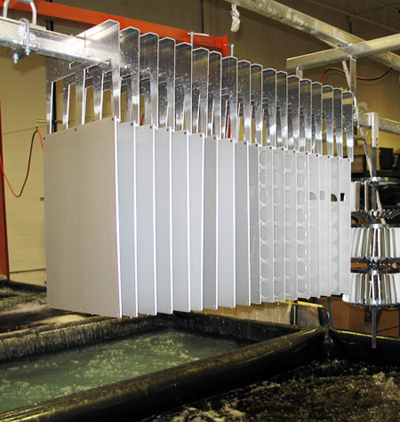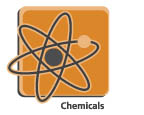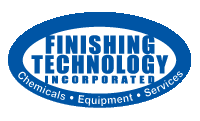|
Finishing Technology’s Anodizing Capabilities
Type 2: Sulfuric Acid
 Type 2 Anodizing: Sulfuric Acid Type 2 Anodizing: Sulfuric Acid
Also called architectural anodizing, Type 2 Anodizing is an electrochemical process that creates an aluminum oxide film by rapidly controlling the oxidation of an aluminum surface. The resulting aluminum oxide film is electrically non-conductive and porous to provide excellent corrosion protection, improved wear characteristics, and is a superior base coat for additional coating applications. The surface appearance is commonly clear or dyed for cosmetic applications. The major benefit of Type II Anodizing is the ability to add a myriad of decorative colors and dyes.
For aerospace applications, Finishing Technology offers Type II Anodizing and includes these capabilities:
- Typical Formed Thickness is 0.00005 to 0.0002 in.
- Rack Anodizing
- Available Masking for Selective Surface Anodizing
- Salt Spray Corrosion Test (minimum 336 hours of salt spray resistance)
- Thickness Analysis
Properties of Type 2 Anodizing
- Corrosion Resistance: Resistant to salt-water and atmospheric attacks.
- Decorative Appearance: Luster can range from dull to high depending on the base metal. The brighter the base metal, the brighter the anodize.
- Electrical Insulation: Aluminum oxide is a dielectric.
- Color Flexibility: Wide spectrum of colors can be obtained.
- Paint Adhesion: Offers a chemically active surface for most paint systems.
- Adhesive Bonding: Improves bond strength and durability.
- Emissivity: Films with a thickness >0.00032 in. increases the emissivity of the aluminum.
Next: Finishing Technology’s Anodizing Capabilities Type 3
|




 Type 2 Anodizing: Sulfuric Acid
Type 2 Anodizing: Sulfuric Acid